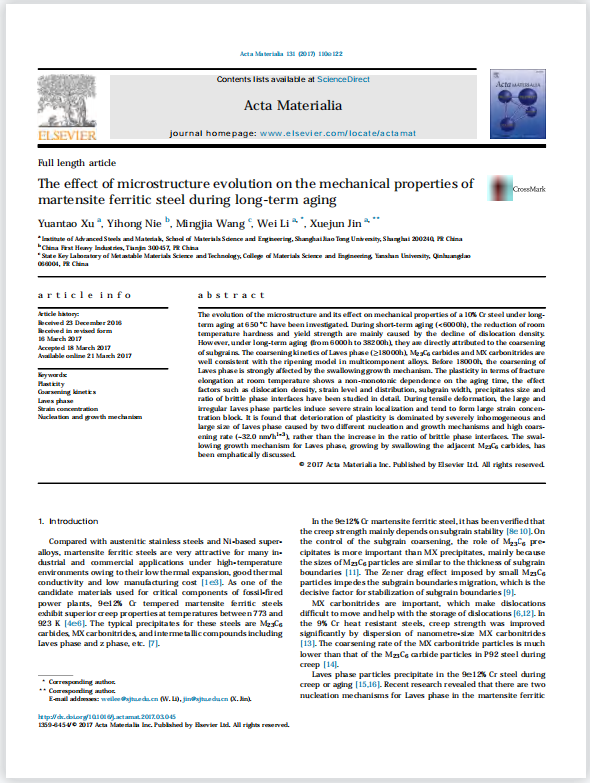The evolution of the microstructure and its effect on mechanical properties of a 10% Cr steel under long-term aging at 650 ℃ have been investigated. During short-term aging (<6000h), the reduction of room temperature hardness and yield strength are mainly caused by the decline of dislocation density. However, under long-term aging (from 6000h to 38200h), they are directly attributed to the coarsening of subgrains. The coarsening kinetics of Laves phase (≥18000h), M23C6 carbides and MX carbonitrides are well consistent with the ripening model in multicomponent alloys. Before 18000h, the coarsening of Laves phase is strongly affected by the swallowing growth mechanism. The plasticity in terms of fracture elongation at room temperature shows a non-monotonic dependence on the aging time, the effect factors such as dislocation density, strain level and distribution, subgrain width, precipitates size and ratio of brittle phase interfaces have been studied in detail. During tensile deformation, the large and irregular Laves phase particles induce severe strain localization and tend to form large strain concen-tration block. It is found that deterioration of plasticity is dominated by severely inhomogeneous and large size of Laves phase caused by two different nucleation and growth mechanisms and high coars-ening rate (~32.0 nm/h1/3), rather than the increase in the ratio of brittle phase interfaces. The swal-lowing growth mechanism for Laves phase, growing by swallowing the adjacent M23C6 carbides, has been emphatically discussed.
